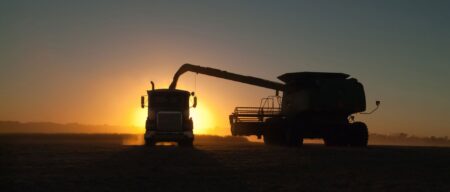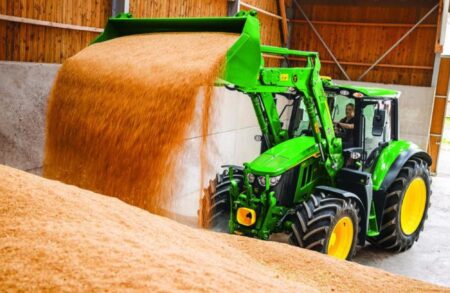Corn sweat has been making national news, as the corn crop pumps moisture into the air. The result? Higher humidity, and as July wraps up, it’s about to get even steamier.
“Heat index temperatures are the problem with that extra humidity,” explained Jeff Andresen, Michigan State climatologist, during a USDA Midwest Climate Hub Outlook “North Central U.S. Climate and Drought Outlook” webinar.
The corn crop is responding to current high temperatures by transpiring a lot of moisture. And that’s adding to those high dew point conditions, explained Dennis Todey, director of the USDA Midwest Climate Hub and ag climatologist.
“It’s going to be above normal (temperatures) during the hottest time of the year,” pointed out Andresen.
Hazards Outlook
The Climate Prediction Center highlights two primary hazards for late July. There’s a period of hazardous high temperatures and continued risk of heavy rainfall in the northern part of the region.
Historically, the hottest stretch of the year for the Midwest falls in the last half of July into early August — and this year, temperatures are expected to exceed normal levels during that climatological peak, shared Andresen.
Temperature Outlook
The combination of heat, humidity, and moisture from healthy corn and soybean crops could push heat index values even higher, raising the risk of heat stress.
Precipitation Outlook
Looking ahead, the Upper Midwest will stay under an active jet stream and storm track through at least next week, bringing chances of 2 inches or more of rainfall in central areas, while the north and west see less. This weather pattern, marked by a series of systems sweeping west to east across the northern U.S., has persisted for several weeks and shows little sign of letting up, shared Andresen.
Forecasts for the 6–10-day and 8–14-day periods (through late July) both point to above-normal temperatures across central and eastern parts of the country, with wetter-than-normal conditions to the north and near- or below-normal precipitation to the south.
This warmer-than-normal trend is expected to continue into early August, although precipitation forecasts remain mixed: drier than normal in the northern Great Plains with equal chances or slightly wetter conditions across parts of the eastern Corn Belt.
For the full month of August, outlooks suggest modest warmth over the northern Midwest, but the strongest heat anomalies are expected to set up east and west of the region. Precipitation may fall short in the Great Plains, while central and eastern areas could see more rain — helpful for easing drought in parts of Illinois, Indiana, and Michigan.


:max_bytes(150000):strip_icc()/CaseCombineHarvestingOnHill-WideShot-2-2000-5323a1ed14634f679027e940a1e80c70.jpg)
:max_bytes(150000):strip_icc()/Lee20Combine-2000-74f4b0472e2f4244a50679f9d4febb2f.jpeg)
:max_bytes(150000):strip_icc()/CaseCombineAndTractorHarvesting2-WideShot-2000-300009fbd0da4f08ac67aee726a10e90.jpg)


:max_bytes(150000):strip_icc()/IMG_5407-2000-f579b6ace88c4bceb2f2541ce97dc378.jpg)


:max_bytes(150000):strip_icc()/Markets-9-Corn-down-wheat-down-5-255020c945814214a487a11b89b5066b.jpeg)